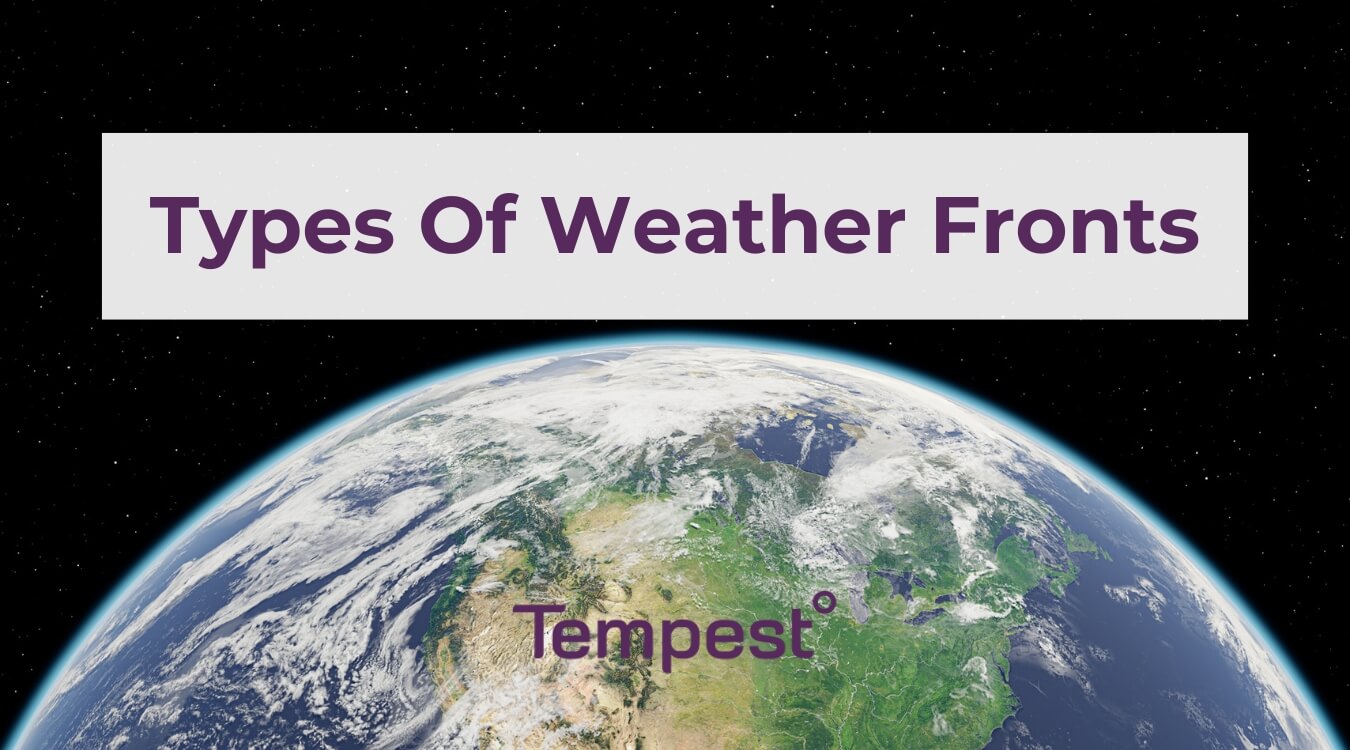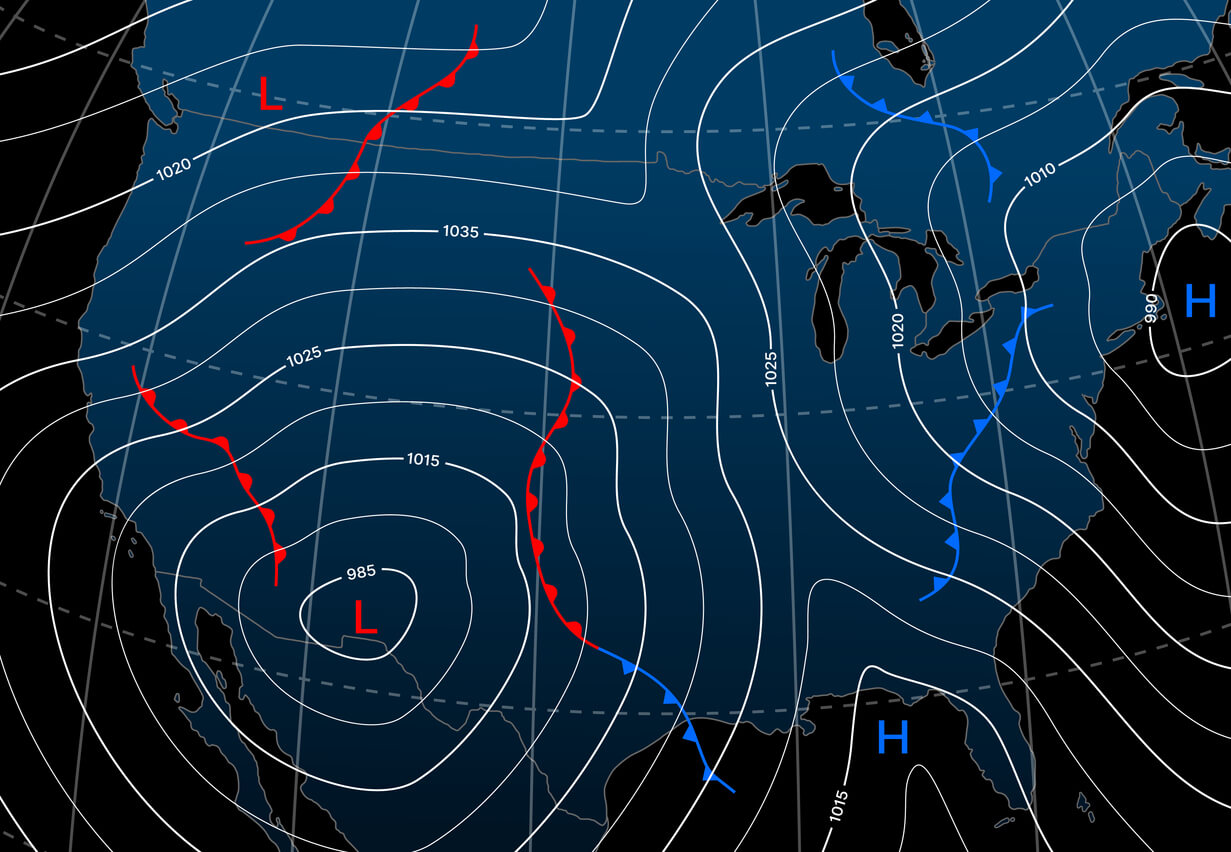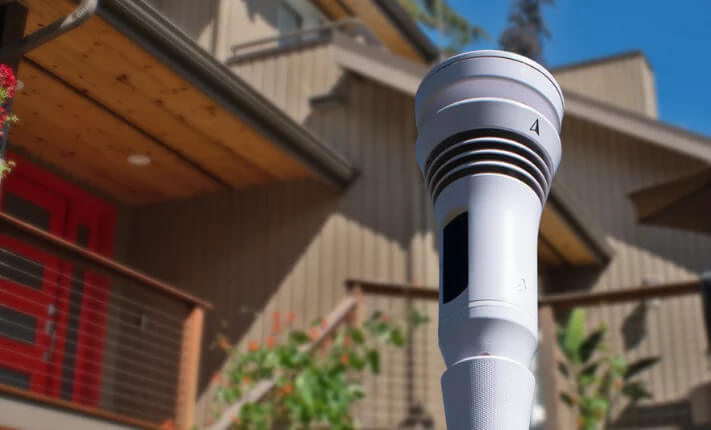Curious about the difference between a cold front vs. warm front and how it impacts conditions in your area? Knowing what happens in a cold front or warm front can help you prepare for future weather changes.
We’ve all heard meteorologists refer to cold and warm fronts in their weather forecasts. But what do they mean when they say a cold front is moving in, and how does this differ from a warm front? Below, we’ll explore the various types of weather fronts and how they each impact weather conditions.
Explore the Tempest Home Weather System to receive accurate and real-time weather data for your precise location.
Types Of Weather Fronts
What is a weather front? A weather front is a boundary that separates two air masses with different characteristics – be it density, temperature, or humidity. When a front passes over an area, it causes weather conditions to change. The specific kind of weather it brings depends on the type of front. The four main types of fronts include: cold, warm, stationary, and occluded.
What Is A Cold Front?
A cold front refers to the displacement of warm air with a colder air mass. Think of it as a cold air mass moving into an area and pushing out the warm air. There are a few variations of cold fronts, though the general idea remains the same. These include a backdoor cold front, an Arctic cold front, a Canadian cold front, and a Pacific cold front.
Generally, cold fronts tend to move to the east and are represented on a forecast as a blue line with triangles pointing in the direction the cold front is moving. With this in mind, what weather does a cold front bring? Since cold air is denser and high-pressure, it stays low to the ground and pushes the warm, moist air up above it. This can create clouds and often precipitation and storms as the two air masses clash.
What Is A Warm Front?
A warm front is the opposite of a cold front, referring to a weather system where a warmer air mass displaces a cold air mass. On a weather map, you’ll see a warm front represented as a red line with semicircles along one side, showing the direction of the front. They often move from south to north.
When a warm front moves in, you can expect conditions similar to those of a cold front. The warm air will push itself above the cold air, creating storms, high clouds like cirrus, and precipitation. However, warm fronts are often slow-moving, as warm air masses are less dense and have low atmospheric pressure, which takes more time to displace the dense cold air close to the Earth’s surface.
What Is A Stationary Front?
There’s also a stationary weather front, which occurs when a cold front and warm front meet up and stop moving – or remain stationary. On a weather map, a stationary front is shown by an alternating red and blue line, with the triangles and semicircles pointing in opposite directions.
Stationary fronts can last for numerous days. A change in wind patterns can make one of the fronts more powerful. Or the front may eventually weaken and dissipate. So, what type of weather does a stationary front bring? The area below the front often experiences heavy rainfall or snow as the weather system stalls for a period of time.
What Is An Occluded Front?
Another type of weather front is an occluded front. When a warm front slowly moves through an area, a colder front behind it may move faster, eventually catching up to it. In this scenario, the cold front essentially “takes over” the warm front. On a forecast, an occluded front is shown as a purple line with alternating triangles and semicircles.
The air behind the occluded front is typically still colder than what was ahead of the original warm front, though the difference between the two air masses isn’t as distinct. Thus, the area under the occluded front may experience a slight drop in temperature and precipitation.
How Is A Warm Front Different From A Cold Front?
The concepts behind cold vs. warm fronts are similar. In either case, one air mass pushes the other out of an area. However, the weather changes experienced in a warm front are different from a cold front.
On a basic level:
- A cold front can cause a sudden drop in temperature.
- A warm front brings in warmer weather.
In addition, since warm fronts move slower than cold fronts, they will often lead to more prolonged precipitation, though cold fronts may cause shorter but more severe storms and showers until they pass.
Measure Weather Accurately In Your Area With The Tempest Weather System
The weather brought by cold fronts, warm fronts, stationary fronts, and occluded fronts can vary, so it’s important to know the difference between them so you can plan your outdoor activities accordingly.
If you want to stop being dependent on the hit-or-miss accuracy of weather forecasts to track changing weather patterns, consider mounting a personal weather station at home, like the Tempest Home Weather System. This is a complete wireless weather station, so you don’t have to use multiple weather instruments to monitor temperature, humidity, rainfall, and other weather data.
Shop the Tempest Weather System to receive real-time observed weather data from your backyard.


